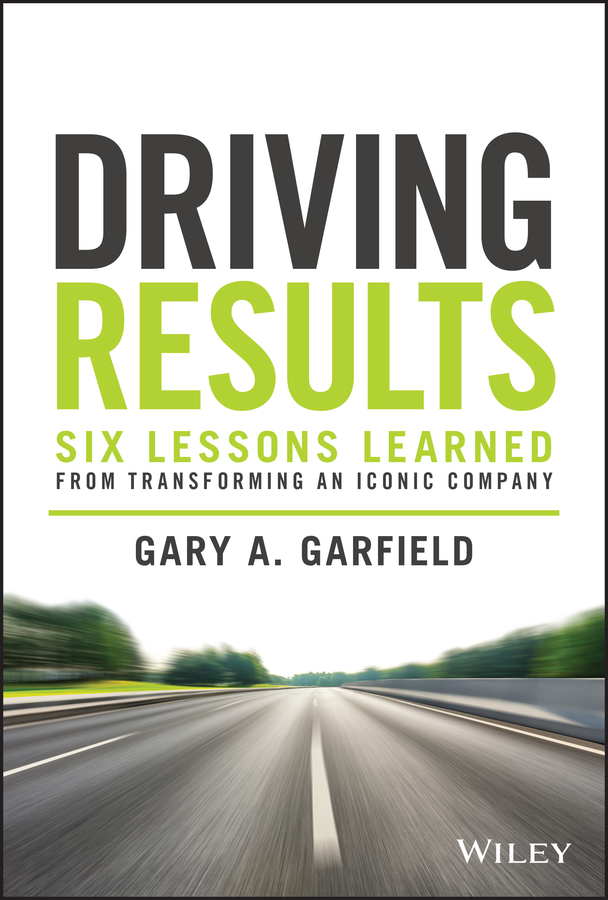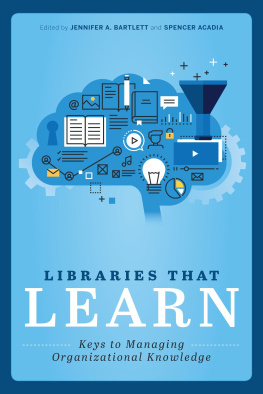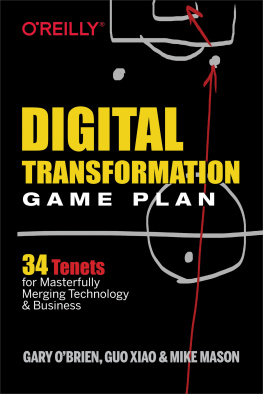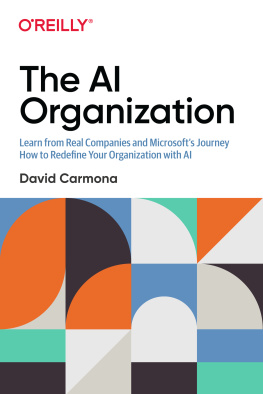
Table of Contents
List of Illustrations
- Chapter 6
- Chapter 7
Guide
Pages
DRIVING RESULTS
SIX LESSONS LEARNED FROM TRANSFORMING AN ICONIC COMPANY
GARY A. GARFIELD

Copyright 2022 by Gary A. Garfield. All rights reserved.
Published by John Wiley & Sons, Inc., Hoboken, New Jersey.
Published simultaneously in Canada.
No part of this publication may be reproduced, stored in a retrieval system, or transmitted in any form or by any means, electronic, mechanical, photocopying, recording, scanning, or otherwise, except as permitted under Section 107 or 108 of the 1976 United States Copyright Act, without either the prior written permission of the Publisher, or authorization through payment of the appropriate percopy fee to the Copyright Clearance Center, Inc., 222 Rosewood Drive, Danvers, MA 01923, (978) 7508400, fax (978) 6468600, or on the Web at www.copyright.com. Requests to the Publisher for permission should be addressed to the Permissions Department, John Wiley & Sons, Inc., 111 River Street, Hoboken, NJ 07030, (201) 7486011, fax (201) 7486008, or online at http://www.wiley.com/go/permissions.
Limit of Liability/Disclaimer of Warranty: While the publisher and author have used their best efforts in preparing this book, they make no representations or warranties with respect to the accuracy or completeness of the contents of this book and specifically disclaim any implied warranties of merchantability or fitness for a particular purpose. No warranty may be created or extended by sales representatives or written sales materials. The advice and strategies contained herein may not be suitable for your situation. You should consult with a professional where appropriate. Neither the publisher nor author shall be liable for any loss of profit or any other commercial damages, including but not limited to special, incidental, consequential, or other damages.
For general information on our other products and services or for technical support, please contact our Customer Care Department within the United States at (800) 7622974, outside the United States at (317) 5723993 or fax (317) 5724002.
Wiley publishes in a variety of print and electronic formats and by printondemand. Some material included with standard print versions of this book may not be included in ebooks or in printondemand. If this book refers to media such as a CD or DVD that is not included in the version you purchased, you may download this material at http://booksupport.wiley.com. For more information about Wiley products, visit www.wiley.com.
Library of Congress CataloginginPublication Data
Names: Garfield, Gary A., author.
Title: Driving results : six lessons learned from transforming an iconic company / Gary A. Garfield.
Description: Hoboken, New Jersey : Wiley, [2022] | Includes index.
Identifiers: LCCN 2022015061 (print) | LCCN 2022015062 (ebook) | ISBN 9781119822479 (cloth) | ISBN 9781119822493 (adobe pdf) | ISBN 9781119822486 (epub)
Subjects: LCSH: Bridgestone Americas, Inc. | Corporate turnaroundsManagement.
Classification: LCC HD58.8 .G3695 2022 (print) | LCC HD58.8 (ebook) | DDC 658.4/06dc23/eng/20220401
LC record available at https://lccn.loc.gov/2022015061
LC ebook record available at https://lccn.loc.gov/2022015062
Cover Design: Wiley
Cover Image: zhaojiankang/Getty Images
To my family. From my greatgrandmother, who immigrated to the United States from Kyiv (then Kiev) with two young boys (ultimately my grandfather and uncle) in the early twentieth century so her family and future generations could have a better life; to my parents and grandparents, who so often guided me; to my wife, who supported my efforts; and to my kids and grandchildren, who have always inspired me to be my best.
Introduction
SEARS IS AN extraordinary study in corporate change. It grew its fortunes as a mailorder retailer. Its first mail order catalog was in 1883, selling watches and jewelry. By 1896, the iconic Sears catalog included bicycles, clothes, groceries, pianos, medical supplies, cars, and even kits to build houses. The mailorder retailer filled a great need as our country spread out to small, rural towns and family farms with few nearby retail outlets.
Then, as Americans increasingly moved to cities and suburbs and had greater access to shopping centers and malls in the latter half of the twentieth century, Sears adapted. It reduced its reliance on mail order and was instead an anchor store for malls all over the country. It became the largest retailer in the world, and it had the extraordinary deftness to alter its business model from mail order to brick and mortar. In 1993, it ceased producing its famed catalog altogether.
But then the company became stale. Its name and brands lost their luster. Business drastically declined as Walmart superstores and other big box stores grew, along with other specialty retailers such as Best Buy and Home Depot. Its management team had lost the agility or foresight that had been demonstrated in the nottoodistant past.
Then, ironically, came Amazon, in effect today's dominant mail order retailer. Sears attempted to recreate its former extraordinary mailorder (that is, online) business, but the effort failed. The Amazon juggernaut further hurt shopping malls, and Sears filed for bankruptcy protection in 2018.
The point, however, is much bigger than Sears alone. The bottom line is everything changes, all the time, and absolutely nothing can be done to prevent it. Change or die. Change is not mandatory; survival is optional. When you're finished changing, you're finished.
Those businesses that have the vision and drive to change will thrive as Sears did when it initially transformed from mailorder to brick and mortar. Those that can't keep changing will, ultimately, join the corporate obituary pages like Sears.
Of course, Sears is not unique in failing to successfully change. But in the merciless, survival of the fittest world of a freemarket economy, at some point or another most companies will fail if they don't adapt, if they don't change. All companies large or small need to continuously adjust to the changing environment in which they exist. Those that do survive and perhaps excel, those that do not, perish.
Blockbuster succumbed to Netflix; showing a fatal lack of vision, Blockbuster declined an offer to purchase Netflix for $50 million early on in Netflix's growth. Today, Netflix's market cap exceeds $200 billion and Blockbuster is nowhere to be found.
Polaroid gave way to the iPhone camera and digital film. Toys R Us also fell to Amazon. Perhaps nothing could have been done to prevent their ultimate demise given the extraordinary innovations of the iPhone and online shopping. But perhaps they would still be around today if they had the vision, the leadership, and executed the other essential elements of successfully driving change.
Camera stores and bookstores used to be commonplace, as did fullservice gas stations. Those companies and businesses fell to changing technology.
Consumer preferences also necessitate change. Zenith TVs, Pontiac cars gone; yet both televisions and cars are still very much in vogue. Budweiser is under pressure from craft beers, Diet Pepsi from healthier alternatives. Compaq didn't fail because computers became obsolete, nor did Yahoo falter because search engines became a thing of the past.
Next page








